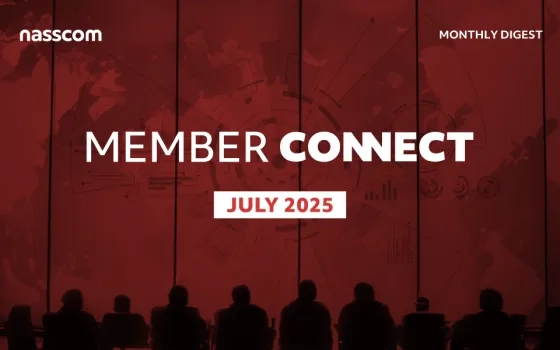Policy Brief
04.06.2019
Context
Last month, the Reserve Bank of India (RBI) published its latest vision document titled Payment and Settlement Systems in India: Vision 2019 – 2021 aimed at creating a ‘cash-lite’ economy. The document outlines the road map for enhancing the payments and settlements system in the country for the three-year period spanning from 2019 to 2021 with onus on encouraging innovation, cyber security, financial inclusion, customer protection and competition. RBI has been publishing its vision documents since 2002, which acts as the guide to the central bank while formulating strategies for development of the payment systems; the last in this series was the Payment Systems Vision 2018 covering the period 2016-18.
Key expected outcomes of Vision 2021
- The volume of cheque-based payments would be less than 2% of the retail electronic transactions by 2021.
- Payment systems like UPI / IMPS likely to register average annualised growth of over 100% and NEFT at 40% over the vision period.
- Digital payment transactions to increase more than 4% from 2069 crore in December 2018 to 8707 crore in December 2021.
- 35% growth in debit card transactions at PoS during the vision period and continued growth in PPI transactions.
- 5 million active PoS by end 2021; digital PoS (QR code) to increase substantially; and the total card acceptance infrastructure will be up-scaled to 6 times present levels by end 2021.
- 50% increase in mobile-based payment transactions.
- With an increase in digital payments, the pricing of electronic payments services to customers should, over the vision period, show reduction of at least a 100 bps from current levels due to reduced marginal cost.
- Security of systems and customer centricity as reflected by –
- 10% annual decrease in technical declines reported across various payment systems.
- 5% annual reduction in business declines reported across various payment systems.
This will be achieved through targeted handholding of merchants and customers with customised campaigns by partnering with system operators and system participants.
- Improvement in Turn Around Time (TAT) for resolution of customer complaints by Payment System Operators (PSOs).
Key highlights of the new initiatives by RBI
- Geo-tagging of payment system touch points
The Reserve Bank is examining a framework to capture the location and business details of commercial bank branches, ATMs and Business correspondents (BCs). It plans to extend a similar framework to capture and maintain information about PoS terminals and other payment touch points as well.
- Bharat QR (BQR)
RBI plans to enhance the usage of signed and encrypted BQR as proactive preventive measure for secure payments.
- Setting up a 24×7 helpline
A general centralised helpline will help address customer queries in respect of various digital payment products, security aspects, recourse mechanism, etc. This will not only build trust and confidence but also reduce expenditure (both financial and human resources) otherwise incurred on addressing complaints and grievances.
- Harmonising TAT for resolution of customer complaints, including for card transactions
Recourse to technology-driven dispute redressal mechanisms that are rule-based, transparent, customer friendly and involve minimum (or no) manual intervention will be advocated / encouraged / appreciated.
- Conducting customer awareness surveys
Customer surveys to gauge awareness and usage of various payment services, including digital payment systems amongst various stakeholders and individuals would be undertaken by the Reserve Bank. The findings of such surveys will be an important component for policy formulation, it said.
- Internal ombudsman by PSOs
The terms and conditions for authorisation of various payment systems by the Reserve Bank require them to put in place a grievance redressal mechanism. The Central Bank has also put in place an ombudsman scheme for digital transactions. While PSOs have set up their own mechanism for addressing customer complaints, RBI is looking at the need to formalise an internal ombudsman in the PSOs so that there is an avenue for swift and cost-effective complaint redressal mechanism within the organisation.
- Feature phone-based payment services
While various reports show that there are more than 350 million smartphone users in the country, a large user base of feature phones exists. Most of the innovation in mobile payment services has focused or supported app-based access limited to smartphones; RBI feels there is a need to implement innovation in payment services for feature phones to provide the necessary thrust towards enhanced adoption of digital payments by various strata of society.
- Off-line payment solutions
Although mobile internet speed has risen, connectivity issues remain unresolved in large areas. Therefore, providing an option of offline payments through mobile devices for furthering the adoption of digital payments shall be a focus area of RBI during this Vision period.
- USSD based payment services
The available USSD based services require additional push through review of customer cost and enhanced usage through participation. The payment service providers may add features to scale up the security of the transactions, irrespective of the device security level / environment, suggests RBI in its document.
- National settlement services
Banks are required to have different settlement accounts for settling card transactions with different card networks. To bring in more efficiency in the system and making the process more graceful, the Reserve Bank shall examine the feasibility of having a single national settlement account for all authorised card networks in consultation with the stakeholders.
- Global outreach of payment systems
Many countries have expressed interest in replicating low cost Indian payment products such as CTS, NEFT, UPI, messaging solutions, etc. RBI will continue to actively participate, involve and engage in discussions in international standard-setting bodies.
- Availability of retail payment systems
Ease of use is often the reason for choosing one platform over the other by the customers looking for instantaneous transactions with confirmation. Reserve Bank will be examining the need to consider uninterrupted and round-the-clock availability of various payment systems; gradual enhancement of limits, including differential day-night, holiday limits for transactions, subject to risk management and liquidity management; etc.
- Widen scope, use and reach of domestic cards
Efforts will be made to increase the scope, coverage and usage of domestic cards, including the RuPay card scheme which was launched in March 2012. Collaborative effort will be initiated among NPCI, banks and the Government to widen and deepen the scope / usage of RuPay cards to enhance its brand value internationally.
- Increased coverage of the cheque truncation system (CTS)
Since cheques continue to be an important payment instrument, steps would be taken to enhance the security and efficiency of the present CTS mechanism, including bringing in uniformity and harmony in processes across the three cheque processing grids, apart from steps towards increased coverage and a single settlement.
- Fostering innovation in a responsible environment through regulatory sandbox
A sandbox approach to regulation would help enable innovation in digital payments while avoiding any systemic risks. The Reserve Bank’s Working Group Report on FinTech and Digital Banking recommended developing a framework for regulatory sandboxes. This will be designed to provide a controlled environment, with certain regulatory exemptions, to allow experimentation of new payment system products by traditional and non-traditional players.
- Contactless payments and tokenisation
Contactless payments, while decreasing the time taken for payment checkout, also ease payments for small ticket payment transactions. RBI has already recognized this and authorised certain players to offer mobile payment solutions driven by secure tokenisation standards. RBI would consider a broad-based framework for other payment experiences, keeping in mind customer liability issues and security of authentication mechanisms.
- Review of membership of centralised payment systems
The Reserve Bank continuously receives requests and feedback for neutrality between banks and non-banks in terms of access to payments infrastructure. The central bank has already permitted participation of non-banks in certain payment infrastructure; it will initiate discussion to develop a framework for settlement risk management with increased participation of non-banks.
- Increasing LEI usage for large value cross border payments
Legal Entity Identifier (LEI) system envisages identification of unique parties to financial transactions across the globe and is designed as an important component for improvement in financial data across the globe. Given the nature of cross border transactions, there is a case for exploring the option of using LEI to identify the payment service providers, their agents and distributors, in respect of cross border services, particularly for large value payments, including expanding the implementation across all the identified segments.
- Encourage adoption of new technologies including DLT for enhancement of digital payment services
Technology has been at the centre of payment systems innovation and development. Adoption of Distributed Ledger Technology (DLT) for financial services has been a subject of interest. Various views espouse that adoption of DLT can enhance the operations of payment systems by improving the quality of data and providing additional information for payment transaction, which help automated reconciliation and reversal with high degree of precision. Adoption of DLT will be considered to facilitate industry wide adoption for areas, which can benefit from this technology.
- E-mandates / standing instructions
The Reserve Bank has been receiving requests for allowing e-mandate / standing instructions-based automation of periodically recurring, non-discretionary payments. It will consider implementation of e-mandates / standing instructions for retail payment systems, subject to customer protection and adequate safeguards like authenticating payment instrument registration, mandating transaction limits, segments, etc.
- Security aspects of mobile payments
The Reserve Bank will issue specific standards, which the banks providing mobile payment services shall comply with, mandate minimum requirements, highlight best practices and initiate discussion on risks emerging from innovative payment channels through emerging technologies including Artificial Intelligence, Internet of Things devices, wearables, etc.
- Regulation of payment gateway service providers and payment aggregators
The growth of online payment transactions has led to increasing role of payment gateway service providers. The current guidelines on payment gateway operations (monitored through banks) are indirect and address only a few specific aspects of their functioning. The Reserve Bank has initiated discussion on examining the need for separate guidelines for payments related activities of these entities which will be taken forward during the vision period.
- Framework for collecting data on frauds in payment systems
To further strengthen the confidence in the payment systems and minimise instances of frauds, there is a need to monitor the types of frauds that may be taking place in various payment systems. The Reserve Bank will promote use of such analytics to proactively identify instances and aspire for prediction of frauds to help instant response and recovery actions, such as blocking irregular transactions, before the payment authorisation.
- Drafting a framework for testing resilience of payment systems
With the introduction of alternate modes of electronic payments, both for the financial markets, and for businesses and individuals, the resilience of the payment systems has gained importance. Here, resilience refers to the ability to continue to operate even if a system has failed completely by switching activity to a separate system or process or a combination of both. A framework would be drafted for the same. The framework shall also include business continuity and infrastructure redundancy preparedness.
- Benchmarking India’s payment systems
The Reserve Bank shall conduct an exercise which will aim at benchmarking India’s payment systems and gauge India’s standing against major countries across all payment systems and payment instruments. Efforts will be towards improving the performance and standing of our payment systems vis-à-vis international / cross-country best practices. The learning points will also be used to improve existing payment system features in the interest of reducing frictions and enhancing acceptance and usage levels.





![[Analysis] Parliament’s Standing Committee Report Calls for Strengthening CCI and Proposes Refinements in the Digital Competition Bill](https://community.nasscom.in/sites/default/files/styles/560_x_350/public/media/images/For%20Blog%20-nasscom%20public%20policy%20960%20x%20600%20png_14.png.webp?itok=TVoaAkX5)






